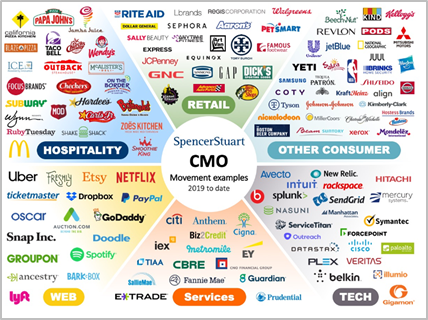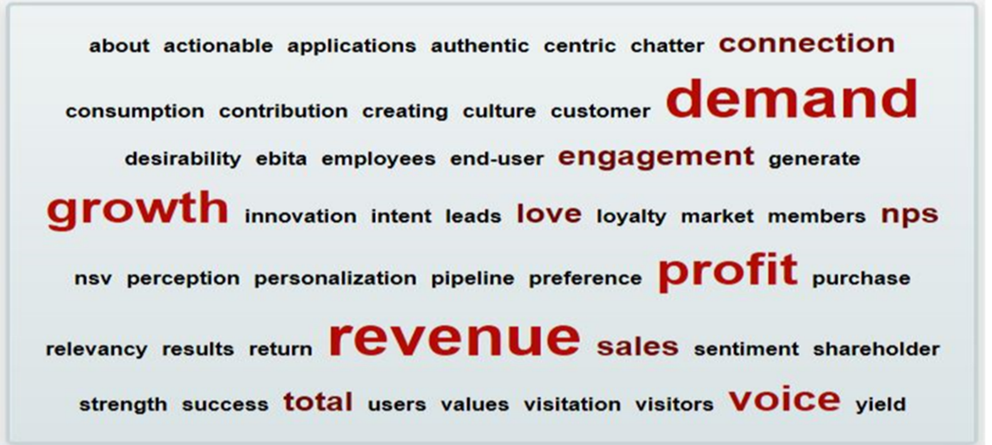As part of the WARC Guide to structuring for effectiveness, Nick Primola looks at how today’s CMO is helping the entire company reach full growth potential by delivering exceptional brand value at every opportunity.
The reports of the CMOs’ demise have been greatly exaggerated.
In my role at the Association of National Advertisers (ANA), I speak with hundreds of chief marketing officers and their teams each year. Through all of the fog that disruption and continuous transformation brings to the marketing function, I find some encouraging realities surging to the forefront:
- Marketing’s role in driving growth has never been more clear
- Chief marketers are now more essential to company growth
CEOs need a ‘growth partner’ in their CMO, not a mere marketer.
Many marketers cite ‘speaking the language of the C-suite’ to be a major challenge for the discipline, especially in an era of shrinking budgets. McKinsey research published in 2019 by ANA Magazine found a link between CMOs who can build relationships within the C-suite and the growth of their organizations. It also found that 27% of CMOs surveyed fell into the Loner archetype, who tend to focus on near-term activities, like ad campaigns and social media, and are seen by CEOs as executors of brand stewardship, advertising, and PR, not as equal partners.
But the Chief Marketing Officer is uniquely positioned to be the CEO’s go-to growth partner. More than driving return on investment from marketing activity, today’s CMO is helping the entire company reach full growth potential by delivering exceptional brand value at every opportunity.
Marketing is an experience function that must help the entire company become more relevant to consumers. Think of it as the central engine that powers the enterprise to move faster, with greater agility and convenience. It helps the entire company to listen and understand needs to build meaningful relationships with the people it serves. Nothing belongs “only” to the marketing department in isolation, but the whole company.
Here, the CMO becomes primary conductor, orchestrating the company’s disparate functions towards their shared goal: more growth. However, one thing is even more clear: there has to be mutual trust between marketers and the rest of the organization. Building trust is an enterprise-wide effort which gets put to the test throughout all touchpoints at any time.
Defining the role for a new era
This is obviously easier said than done, especially since marketing’s transformation has created some complexities in how the role itself is defined. Take for example, the emergence of new c-level titles like chief experience, chief customer, chief growth, chief brand, chief demand, and several other chief [fill-in-the-blank] officers. Brands to do away with the Chief Marketing Officer title in recent years have included alcoholic beverage brand Beam Suntory, hotel chain Hyatt Hotels, and FMCG giants Johnson&Johnson.
Most of these ‘new’ roles were traditionally associated with marketing but have become distinct enough to add to, report to, or sometimes replace the role of Chief Marketing Officer. Companies have to actively evolve roles in ways that make sense for themselves, but does this end up diluting the potential for what the CMO role itself can achieve?
Given this upheaval, it’s no wonder there is so much movement among C-suite-level marketers at top brands, as illustrated in this recent snapshot of CMO turnover from search firm Spencer Stuart. The average tenure for chief marketing officers of leading US consumer brand companies decreased to 43 months from 44 months in 2018, according to the 15th annual CMO tenure study. The median time spent in the role was just 27 months.

Source: Spencer Stuart
However, individual CMOs have already begun embracing the disruption as a way to elevate the CMO role to where it can reach full potential in helping the company drive business growth. For example, Rick Gomez, CMO of Target Corp recently added responsibilities for Digital and Business Strategy to his role. Marcel Marcondes, US CMO at Anheuser-Busch, drives business innovation for the company through a “people-first” marketing strategy. CMOs at companies like JPMorgan Chase, Chobani and Hulu (Disney) were recently promoted to a CEO or President position.
What does being a 'growth partner' actually mean?
To step into the role of “growth partner”, CMOs must first be on the same page as their CEOs in how they define growth.
Here is where there’s still work to be done. In October 2019 at a private gathering of 200 chief marketers at the ANA’s annual conference we asked members of the CMO Growth Council (a group of leading brand marketers): What is the most important KPI for the marketing function?

Source: CMO Growth Council, 2019, What is the most important KPI for the marketing function?
There were over fifty different answers, which was much more variation than expected. Think about how a group of CEOs or CFOs would answer this same question. I doubt there would be more than a handful of terms.
Likewise, another fundamental requirement for being the CEO’s growth partner is having the ability to accurately measure marketing’s impact on company growth. Speaking the language of the C-suite has never been more important. Unfortunately, there is still no universally accepted methodology for measuring the value of brands, nor the contribution of marketing. In fact, 74% of companies surveyed in the US by the ANA in December 2019 stated they do not currently have a process in place to measure brand value at all. This is a major gap, and one the ANA is set to provide help with in 2020.
We’re closer to reaching marketing’s full potential than we think.
The good news is that progress is happening at both the industry-level and at individual companies. At the industry-level, the CMO community has established a leadership agenda meant to take control and lead disruption in the areas that will best help them collectively drive more business growth.
Established by the Global CMO Growth Council in 2018, hundreds of CMOs around the world have since joined forces to take action to accelerate advancements in four priority areas: brand experience & innovation, data & technology, talent development and using marketing for positive impact on society and sustainability in a way that drives growth.
This CMO agenda is well-aligned with the much-publicized commitments of CEOs in August 2019, made in support of a new Statement on the Purpose of a Corporation that moves from shareholder primacy to benefiting all stakeholders – customers, employees, suppliers, communities and shareholders.
CMO Growth Council Priorities
Source: Association of National Advertisers
In pursuing a common agenda that is central to how companies and society generate growth, the future of the marketing function and the role of the CMO indisputably thrives as an essential part of the world’s future.
Read more articles from the WARC Guide to Structuring for effectiveness.
The new playbook for effective brand experience
Nikki Mendonça
Using data and analytics to maximise effectiveness
Christian Polman
In-housing: how to overcome common pitfalls
Ryan Kangisser


